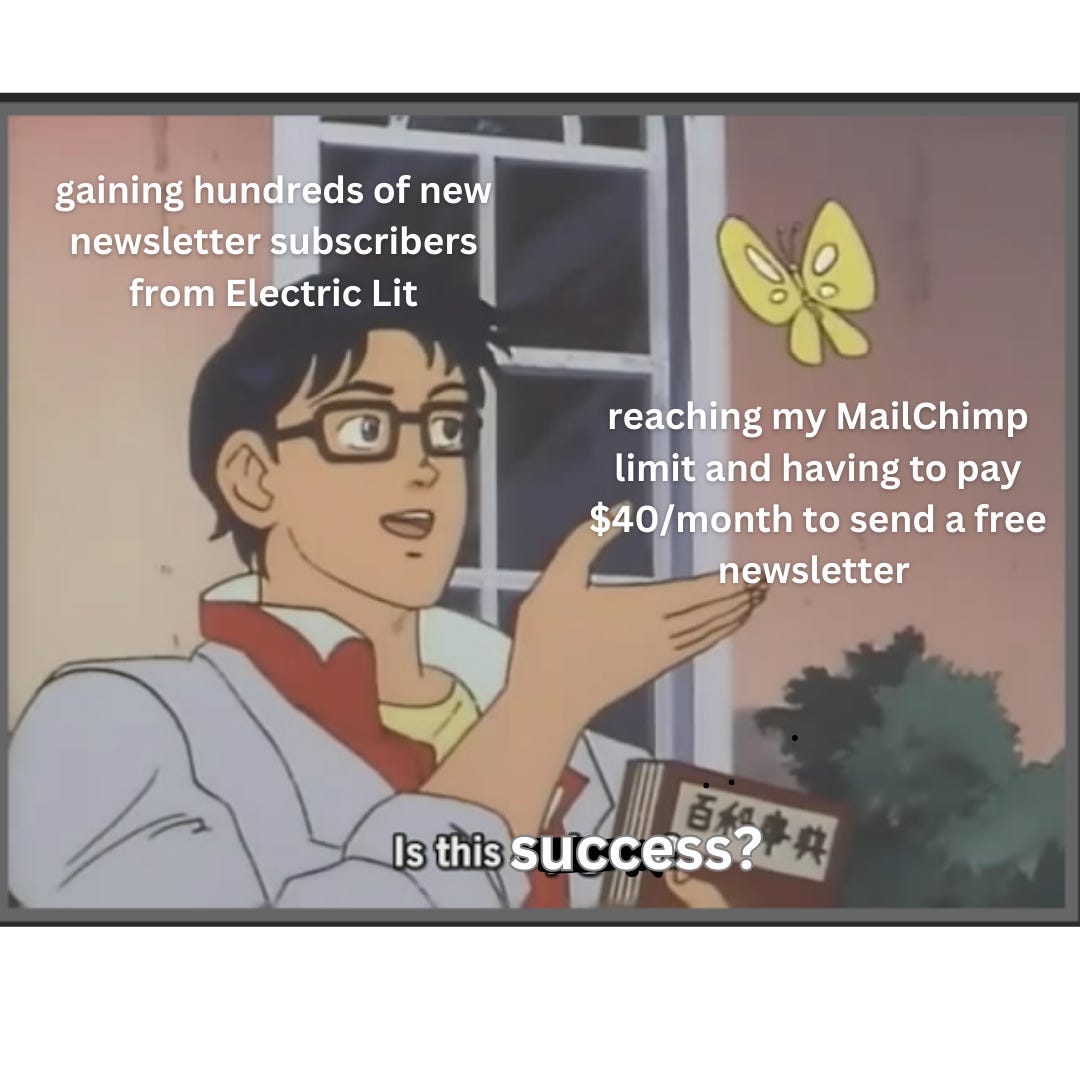Six years ago, I started sending out a weekly newsletter via MailChimp about writing and publishing. I love MailChimp—they were one of the very first corporate sponsors of BinderCon, the feminist writing conference I co-founded and led for three years. I will forever be grateful!
The downside of MailChimp is that growing your audience comes with a price.
I rarely promoted my weekly newsletter, but my audience grew through word-of-mouth. And in April it happened: my newsletter became so popular that I had to start paying to use MailChimp.
I was a victim of my own success again in July when I started posting 30 days of publishing advice to Threads, the official Threads account reposted, and I got a ton more subscribers.
I’m not a newcomer to Substack. I was actually an early adopter in 2020—my side project, Poet-in-Residence, where I published the poetry I was writing in the early days of lockdown, helped me sell a poetry collection on proposal. (If you want to read more about how a side project could help you sell your book, I wrote about it here.)
I’ve been wanting to make this transition to Substack for months, but I exercised self-restraint and made myself finish writing my sixth book before I made the transition!
The good news is my gothic novel set in a TikTok hype house is officially on submission. May the odds be ever in her favor! I’ll keep you posted. 🔮
I decided to use Substack to publish my weekly newsletter Attention Economy for several reasons:
as I mentioned above, MailChimp charges me $40/month for 2,500 contacts, plus $12.75 for blocks of additional 500 contacts. If I don’t “archive” the users who unsubscribe, they “count” as contacts. Am I telling you that I look every week at who unsubscribes from my newsletter, and then archive those contacts, in order to save money? 🙃
Substack is not only free to use—I can actually earn income here, if/when I decide to offer paid subscriptions. I have decided to keep this newsletter free for now, because growing my audience is a higher priority for me than earning income for this newsletter. But I like that the option is available to me!
Substack is actively trying to solve the discoverability problem that all creators face. I can use Substack features (like their recommendation feature) to spotlight the great work that my colleagues and my clients are doing. The comments section on Substack is a kind of “social media” where readers and writers can find each other.
Stay tuned for a post next week about what I learned when I tried to become a literary agent (!) this summer.
If you’re working on a memoir, I’m offering my popular seminar on memoir plus on October 10 and 17, with special guest Emma Copley Eisenberg.
Personal ad
Seeking a beta reader for a Frankenstein-inspired MG graphic novel (unillustrated script) about a 6th grade boy, isolated and bullied, who builds a cow out of thrift shop finds. When the reanimated bovine is discovered, the town threatens to oust her–zoning laws state: no cows allowed. Protagonist Simon Franken is bolstered by a team of high school animal rights activists and a new friend, Eleanor, who emerges as he gains confidence. This modern day fairy tale for middle graders follows the story of Simon’s fight to keep his undead cow, but it is ultimately a story about friendship and how authenticity liberates us. This is a script only (without the illustrations). Email Maya if interested in swapping manuscripts: maya.gottfried@gmail.com (Note: Maya is looking for an ADULT beta reader, not a kid or a teen. Thanks!)
I would love it if you left a comment saying hi (and wishing me good luck on my novel submission! 🤞🤞🤞)



Yay!!! Glad you're here.
Leigh!! So glad you are here and I KNOW your new novel is soon to be in my hot little hands!
Can’t wait! 😆